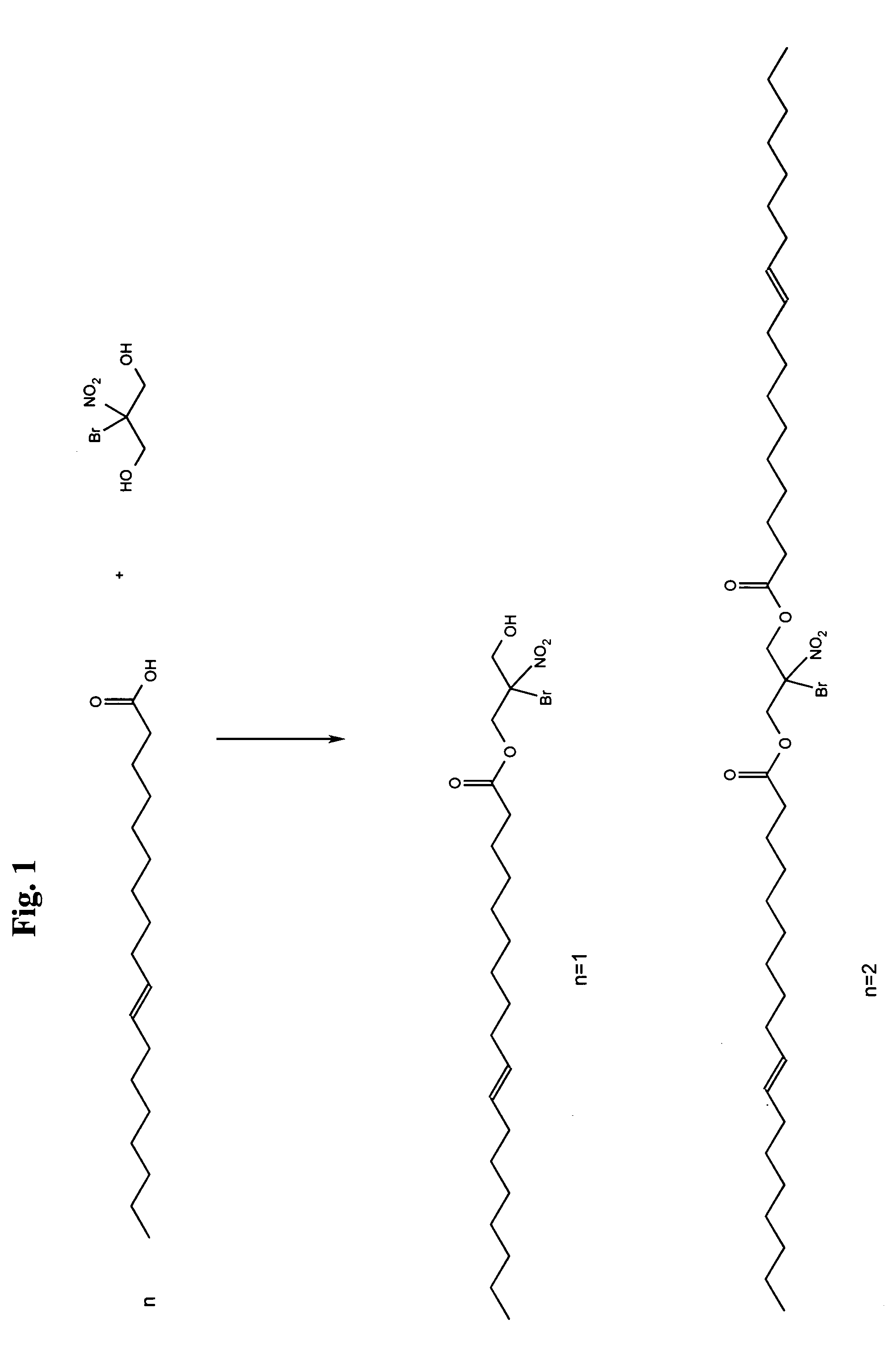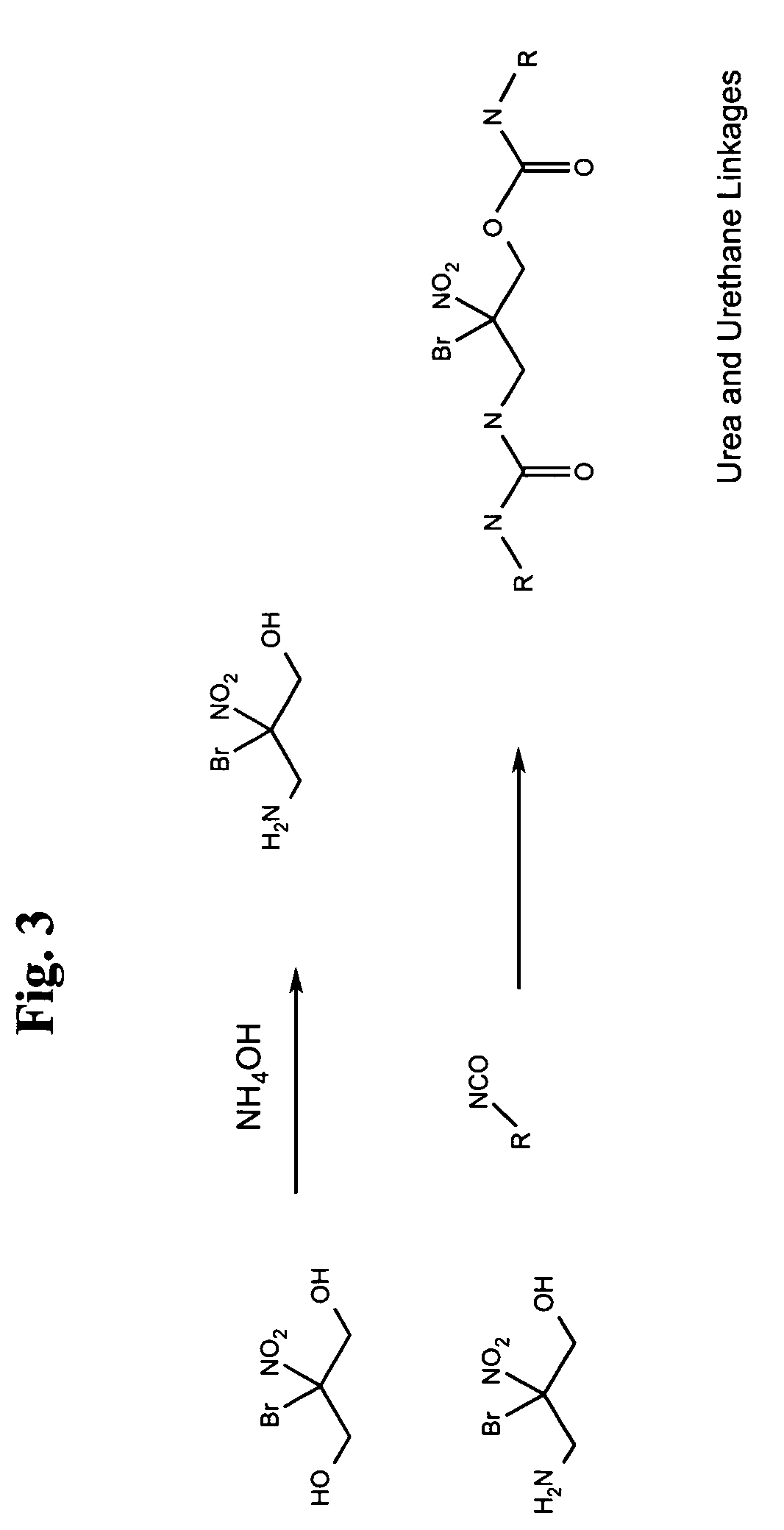Esters with antimicrobial, bioresistant and fungal resistant properties
a technology of antimicrobial, fungal resistance and antifungal properties, which is applied in the preparation of carbamic acid derivatives, make-up, organic chemistry, etc., can solve the problems of metal working fluids (mwf) and metal working fluid bases suffering a failure mode, destabilizing the emulsion, and especially acu
- Summary
- Abstract
- Description
- Claims
- Application Information
AI Technical Summary
Benefits of technology
Problems solved by technology
Method used
Image
Examples
Embodiment Construction
[0018]It is well known in the art to combine alcohols with carboxylic acids to form ester linkages. One example is isopropyl oleate, the ester of isopropyl alcohol and oleic acid. Polyols are also commonly used, such as in the production of Lexolube 21–214 by Innolex. A typical ester will have the following formula:
[0019]
where R typically comes from the original carboxylic acid and R′ typically comes from the original alcohol. It is well known in the art that R and R′ can be the same or different. The typical example noted above as isopropyl oleate has the following structure:
[0020]
[0021]The compound bromonitropropanediol or 2-bromo-2-nitro-propane-1,3-diol (BNPD) has known antimicrobial properties. Tests on this compound have shown that it is effective against various strains of both gram positive and gram negative bacteria in concentrations of 1–50 ppm with the average minimum inhibitory concentration being around 25 ppm. In addition, work has indicated that BNPD is also antifunga...
PUM
| Property | Measurement | Unit |
|---|---|---|
| pH | aaaaa | aaaaa |
| volatile | aaaaa | aaaaa |
| weight | aaaaa | aaaaa |
Abstract
Description
Claims
Application Information
 Login to View More
Login to View More - R&D
- Intellectual Property
- Life Sciences
- Materials
- Tech Scout
- Unparalleled Data Quality
- Higher Quality Content
- 60% Fewer Hallucinations
Browse by: Latest US Patents, China's latest patents, Technical Efficacy Thesaurus, Application Domain, Technology Topic, Popular Technical Reports.
© 2025 PatSnap. All rights reserved.Legal|Privacy policy|Modern Slavery Act Transparency Statement|Sitemap|About US| Contact US: help@patsnap.com



